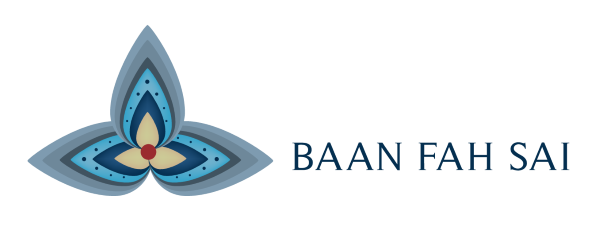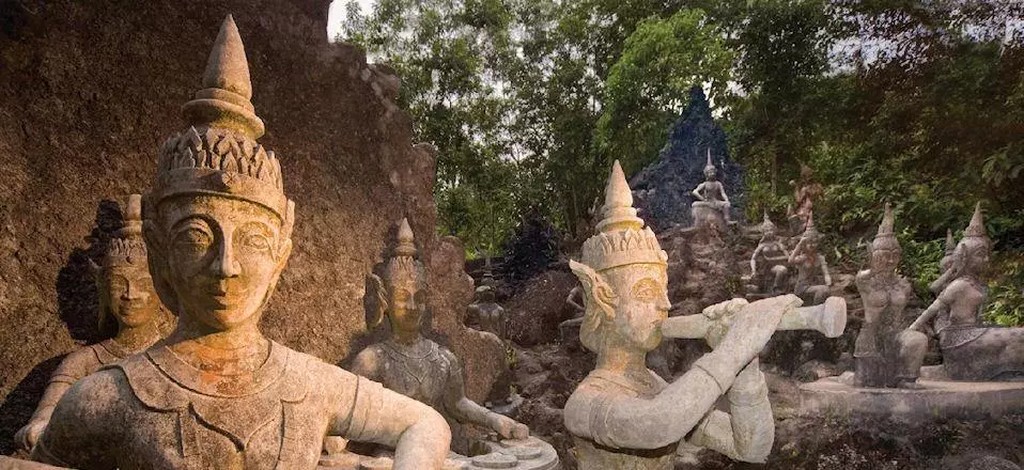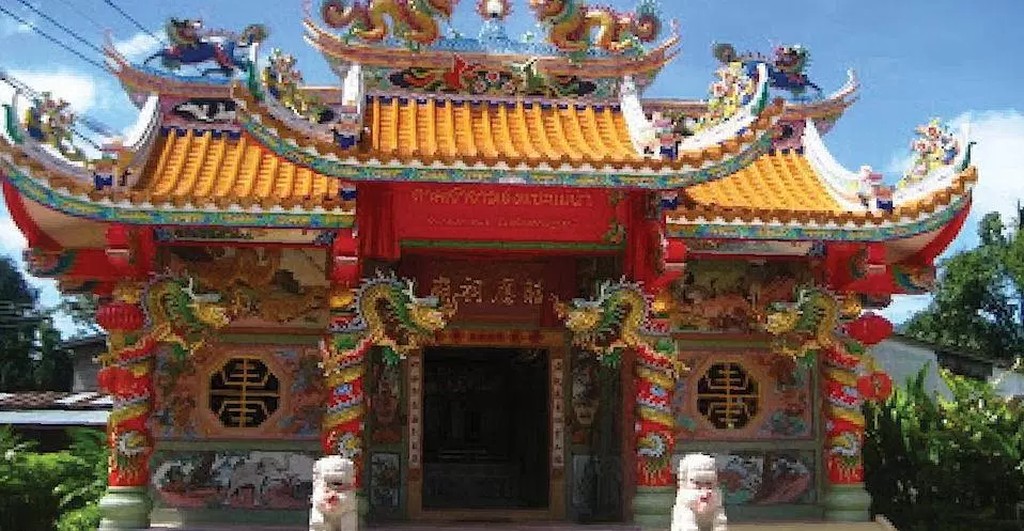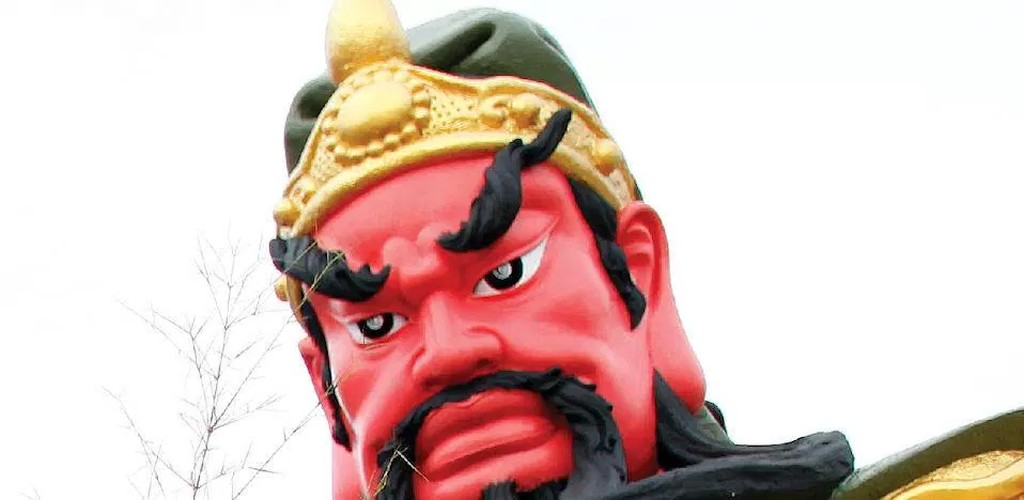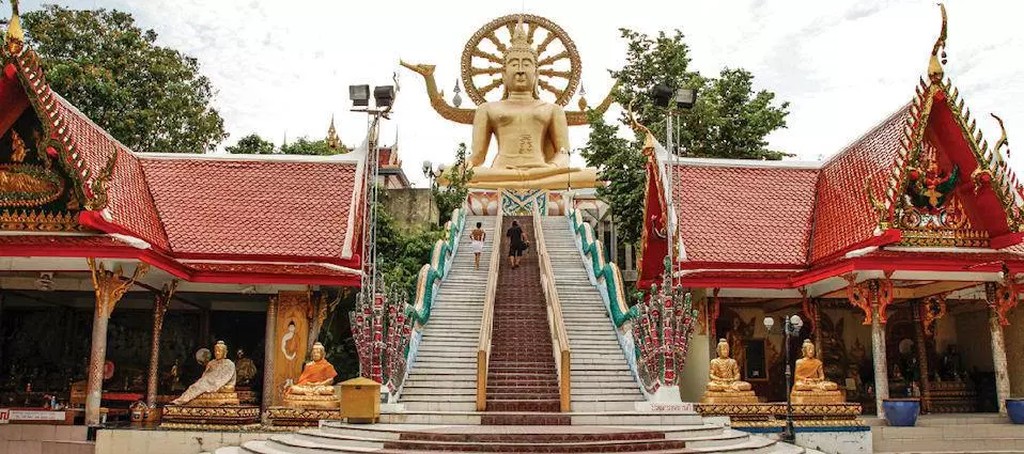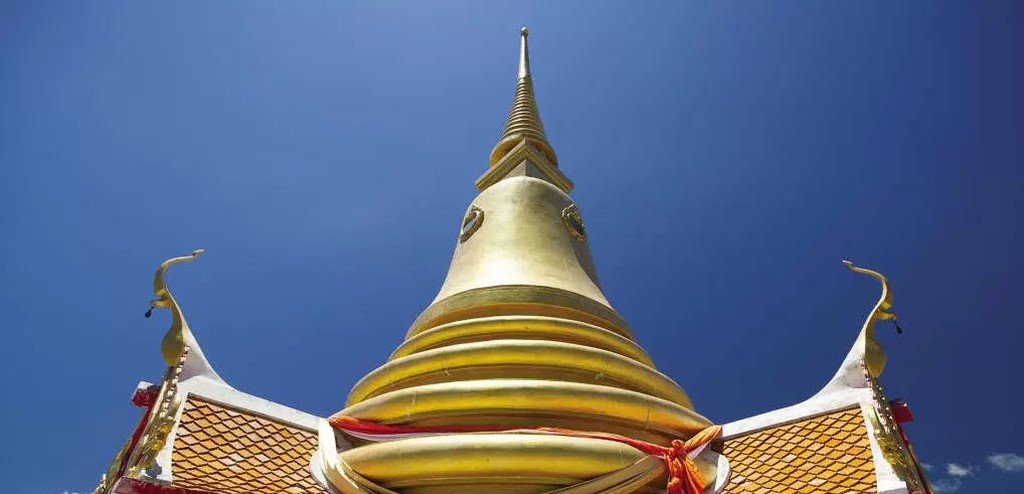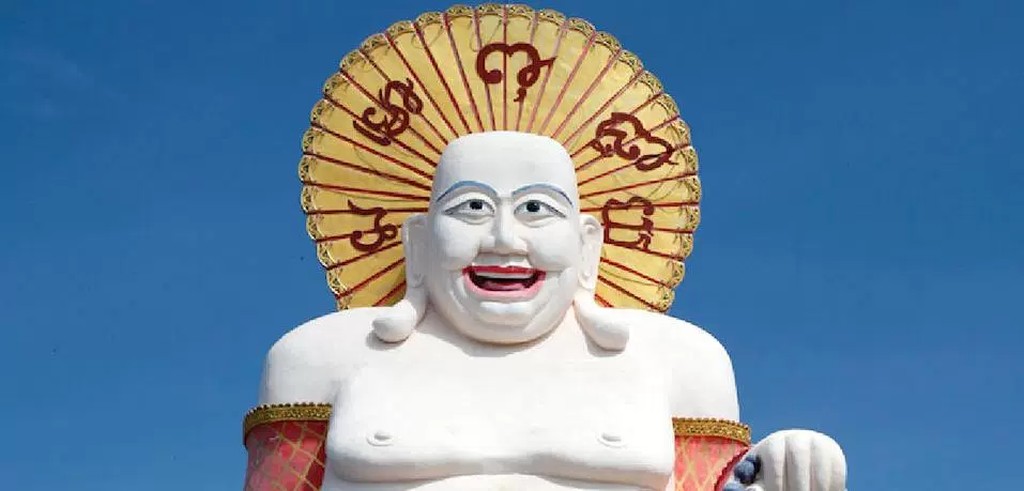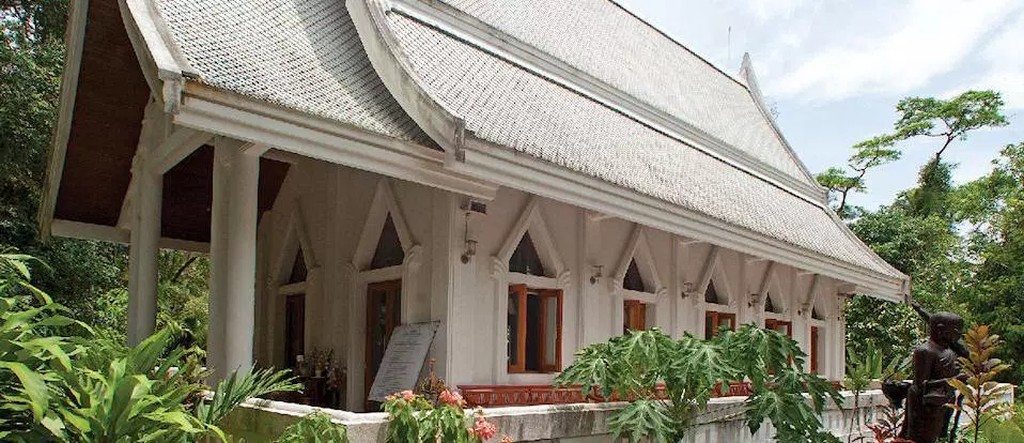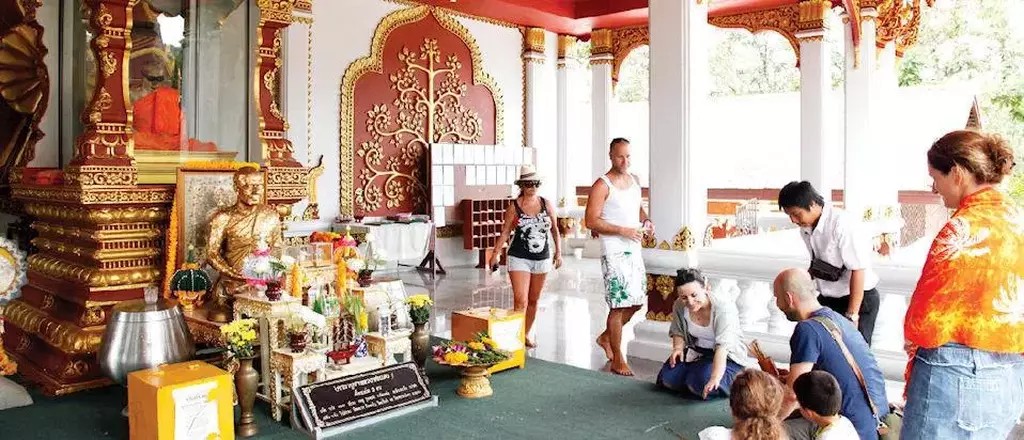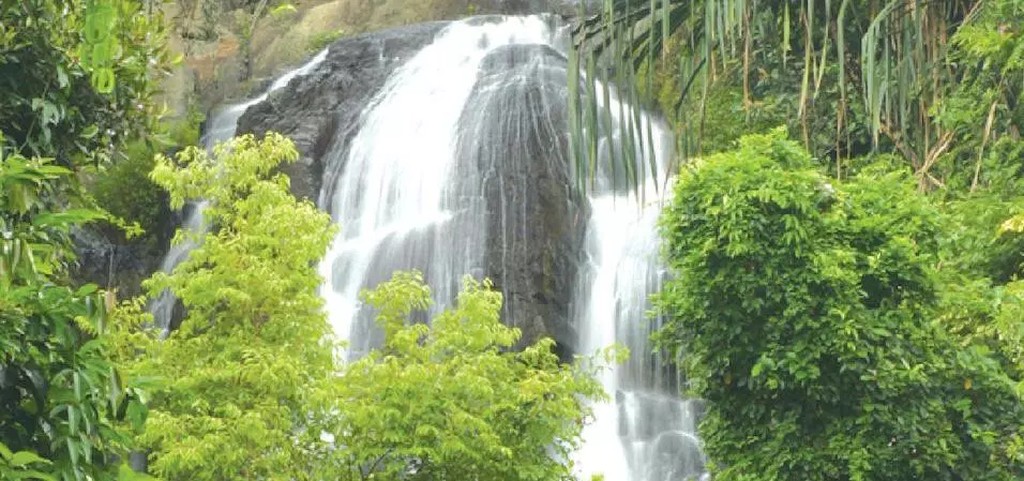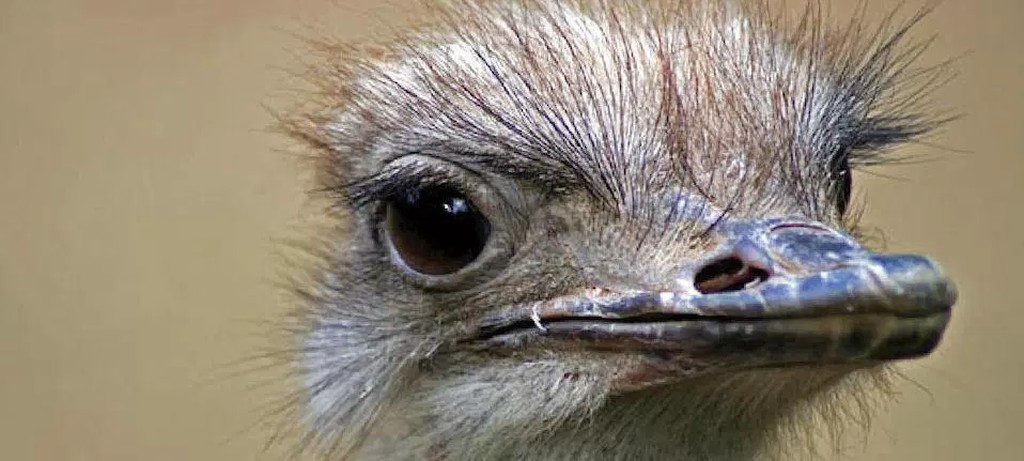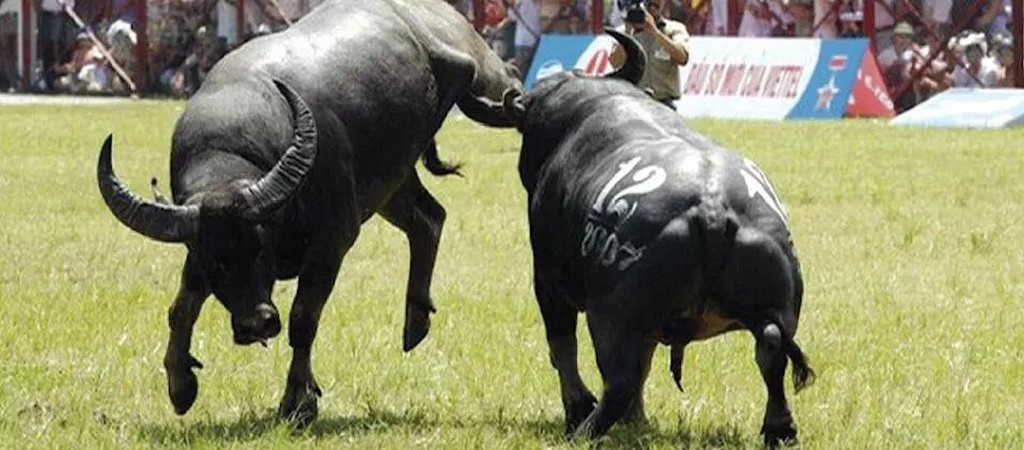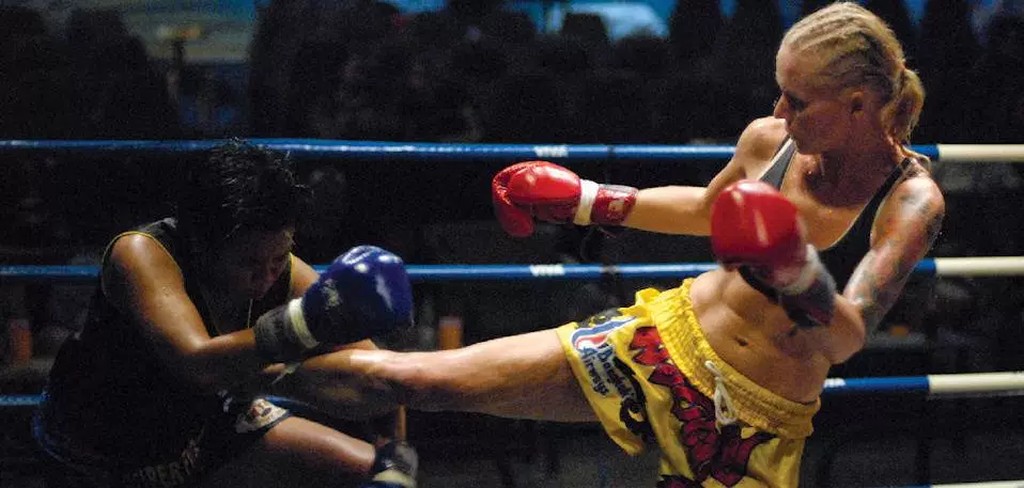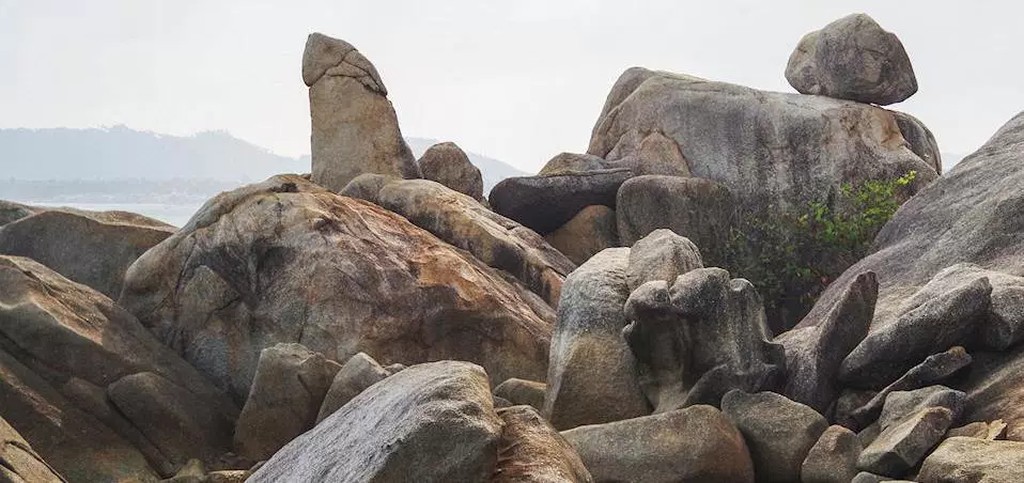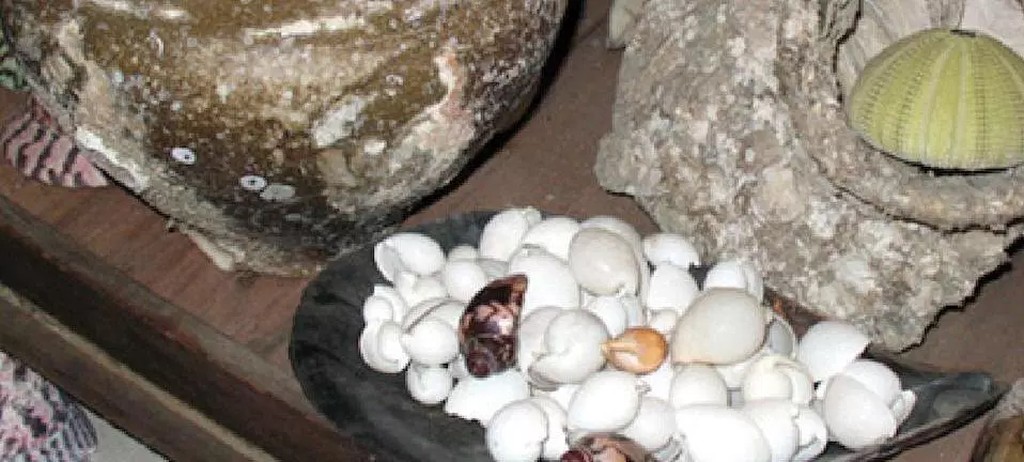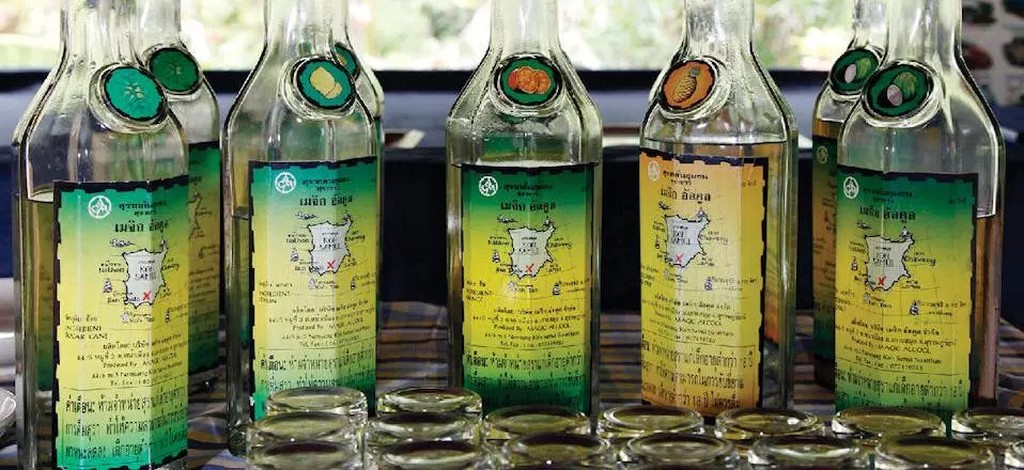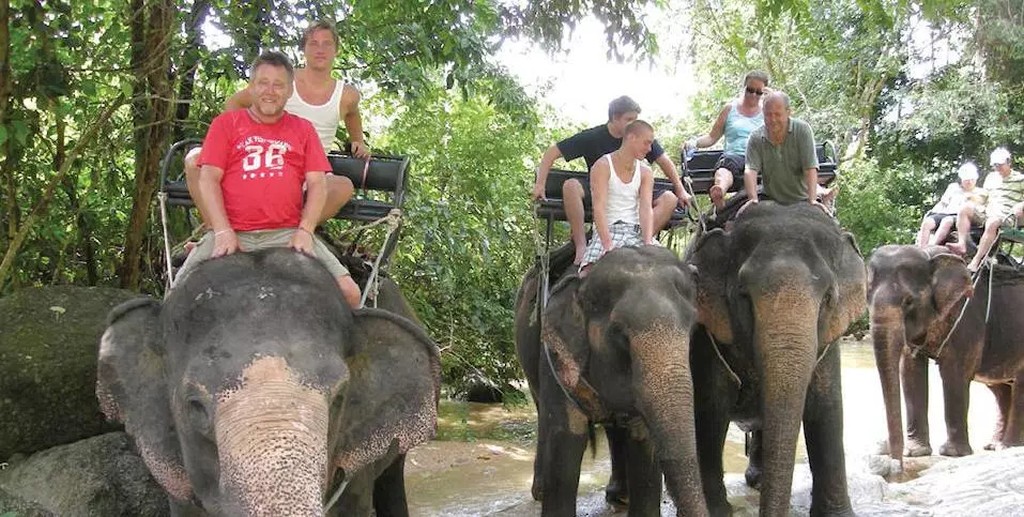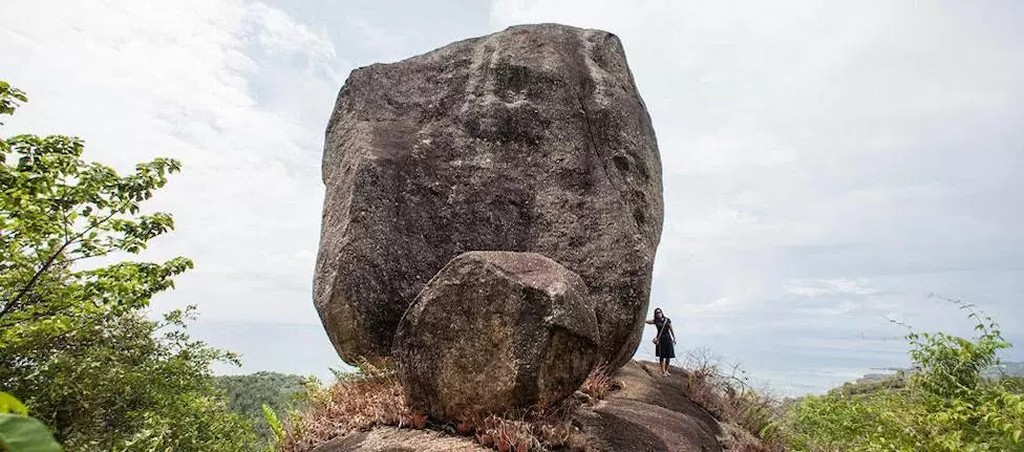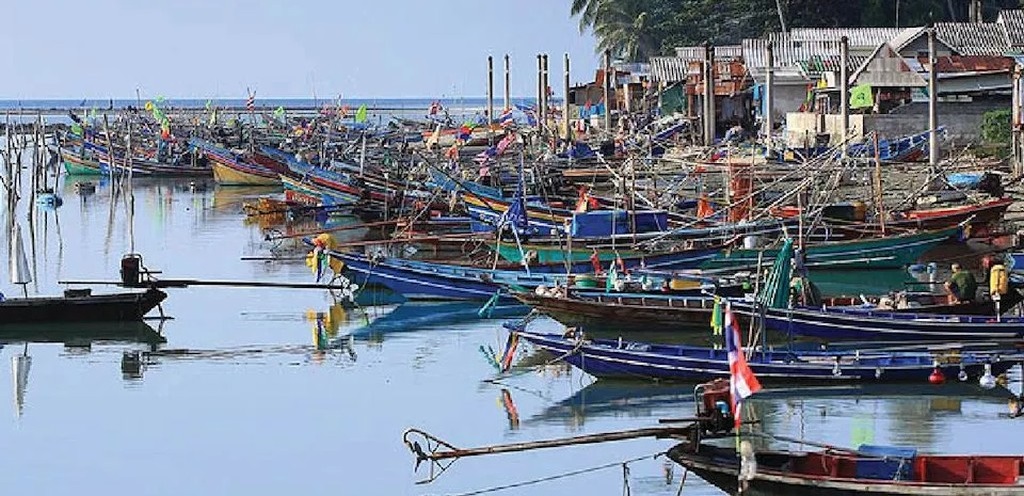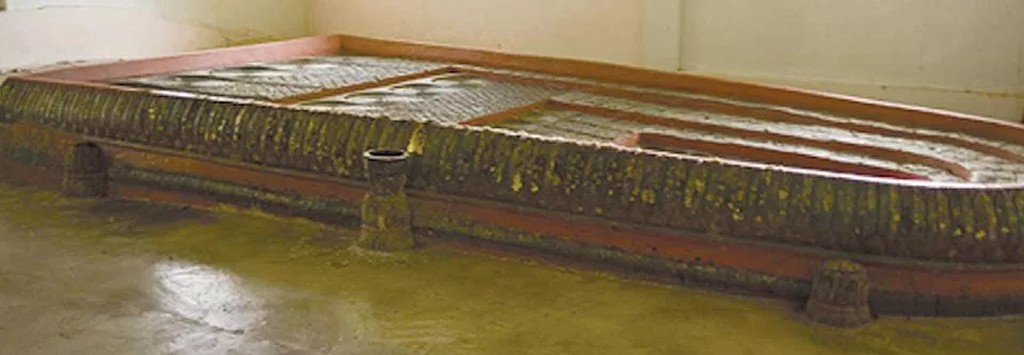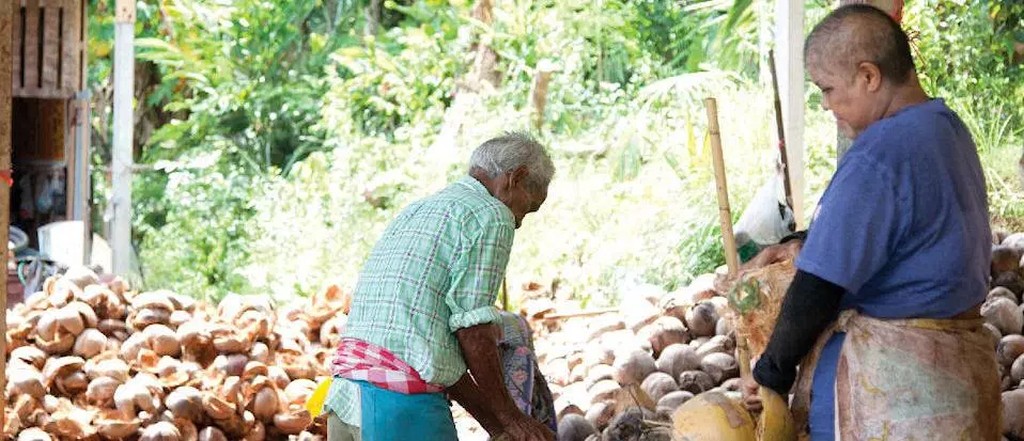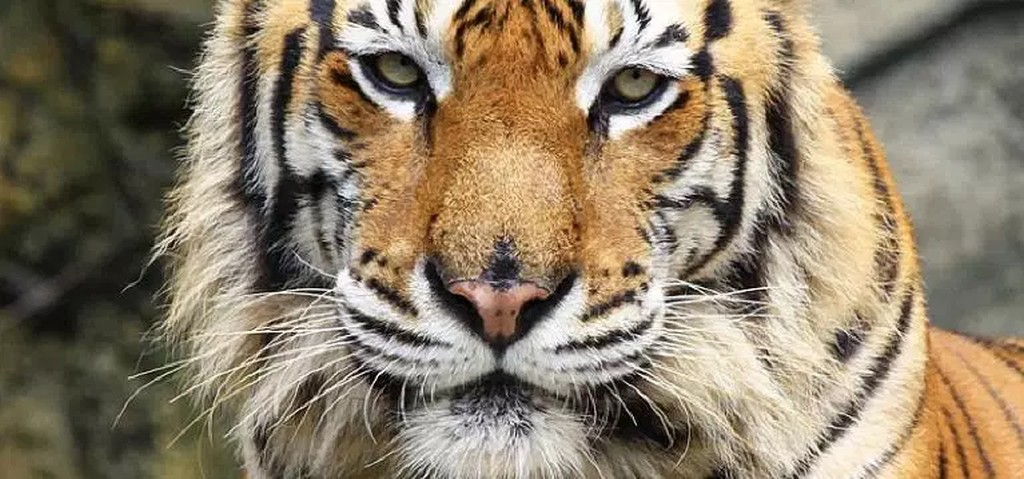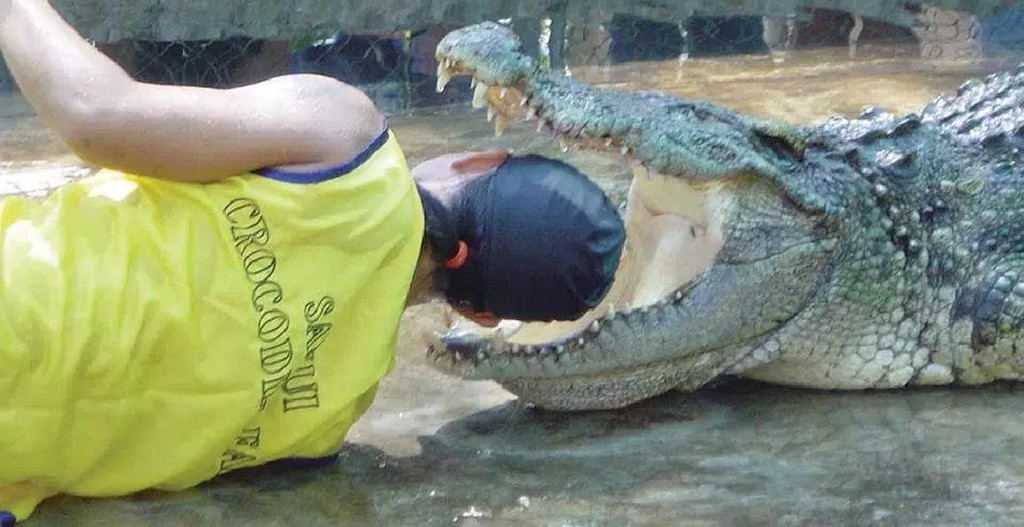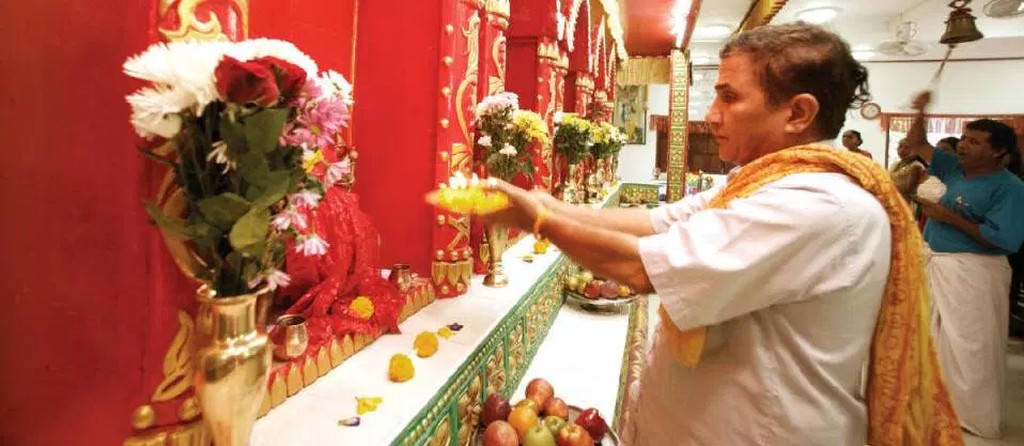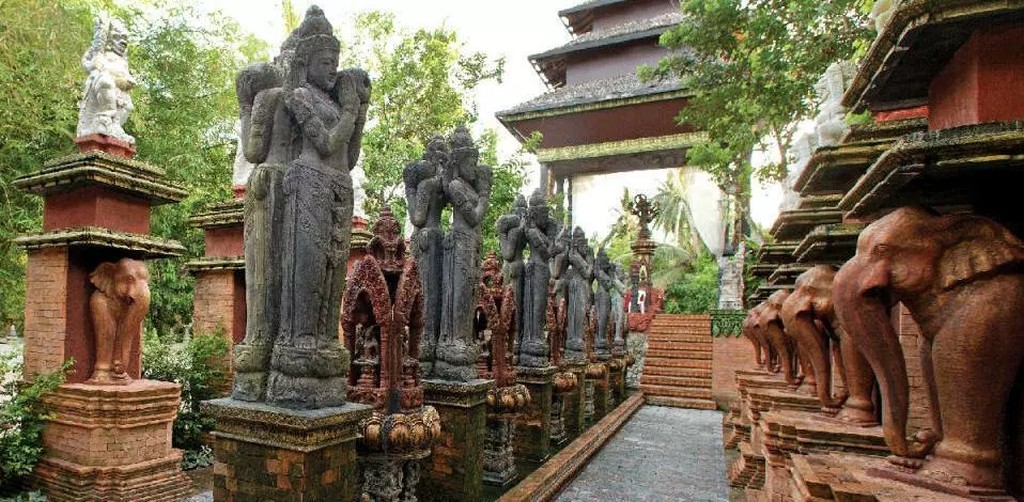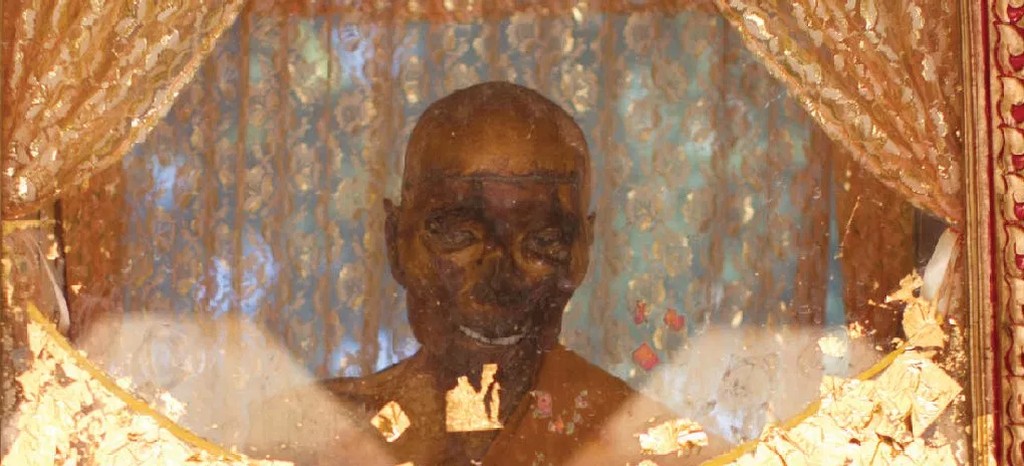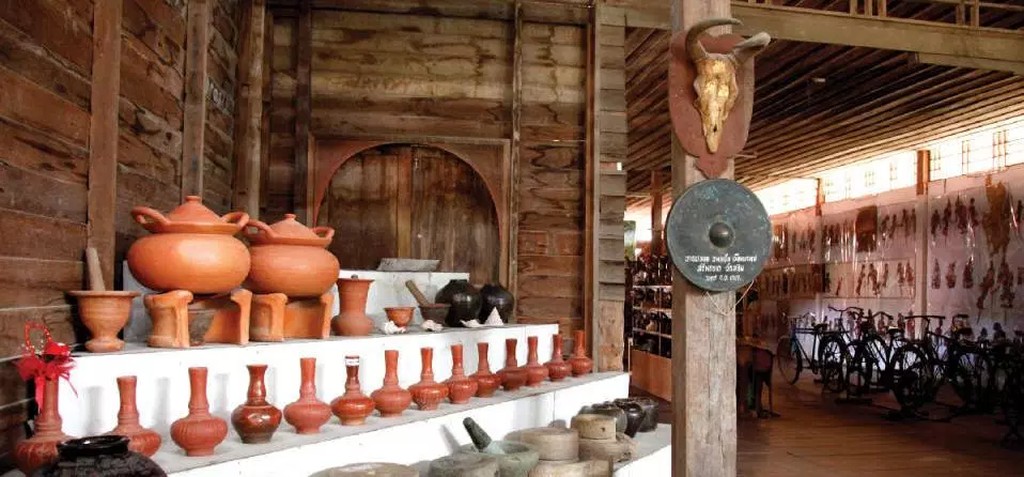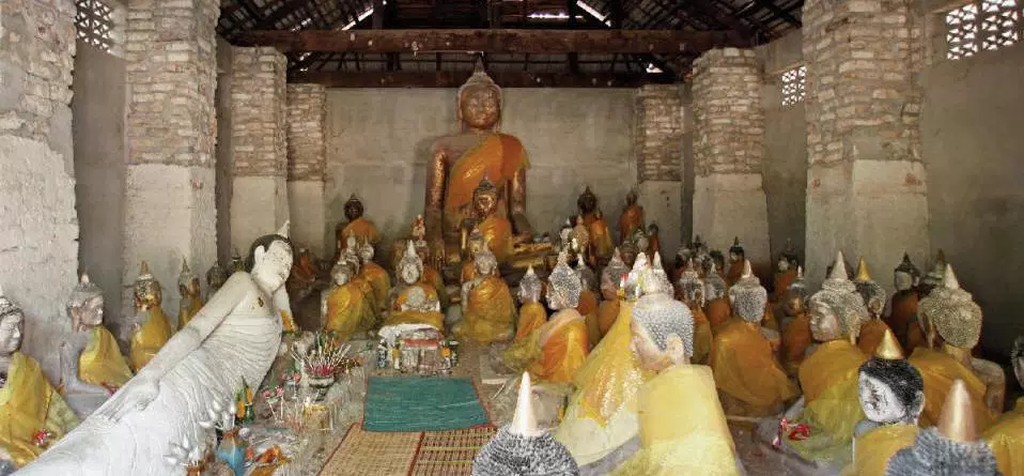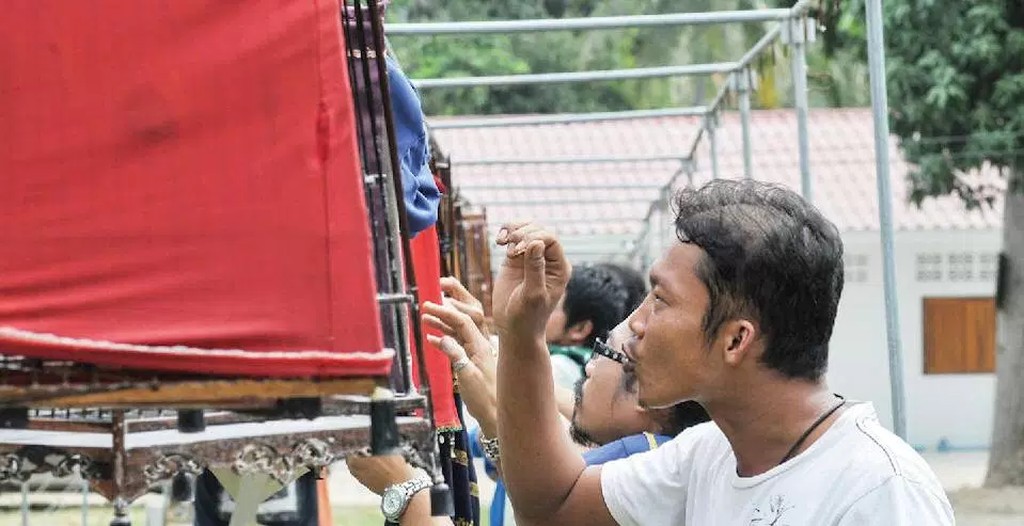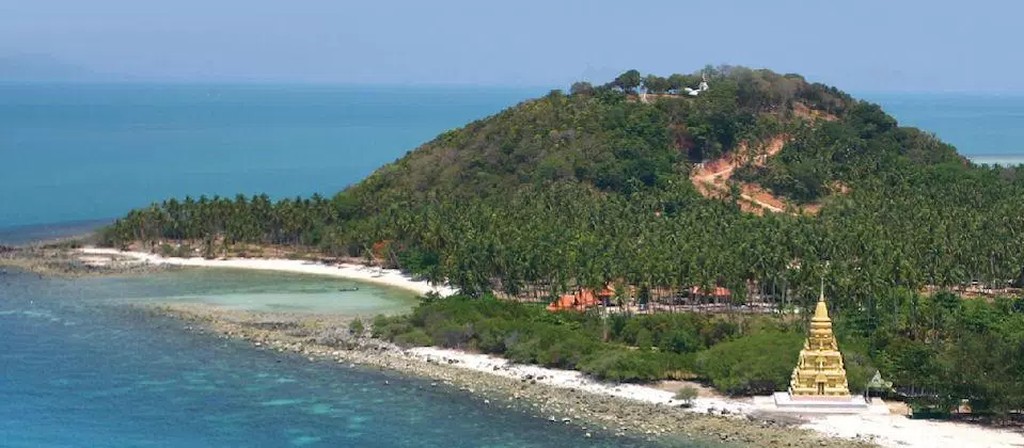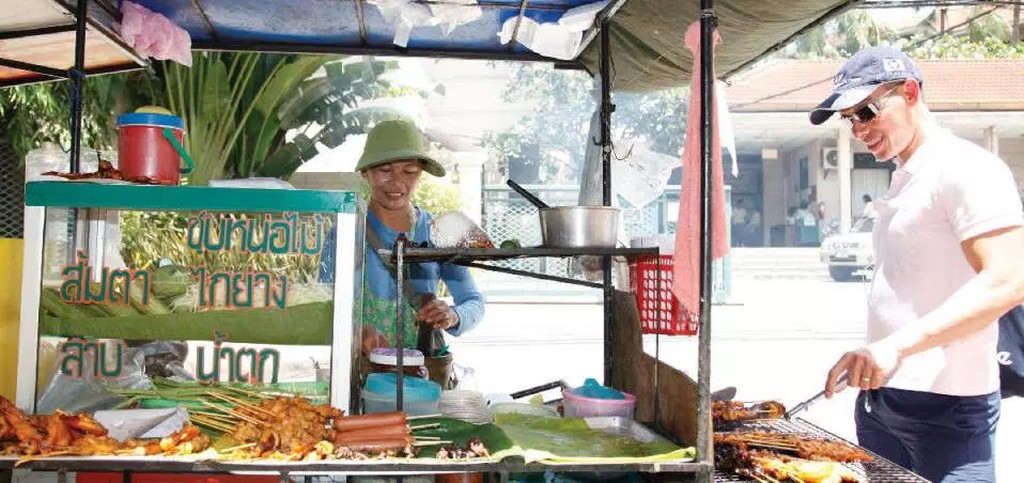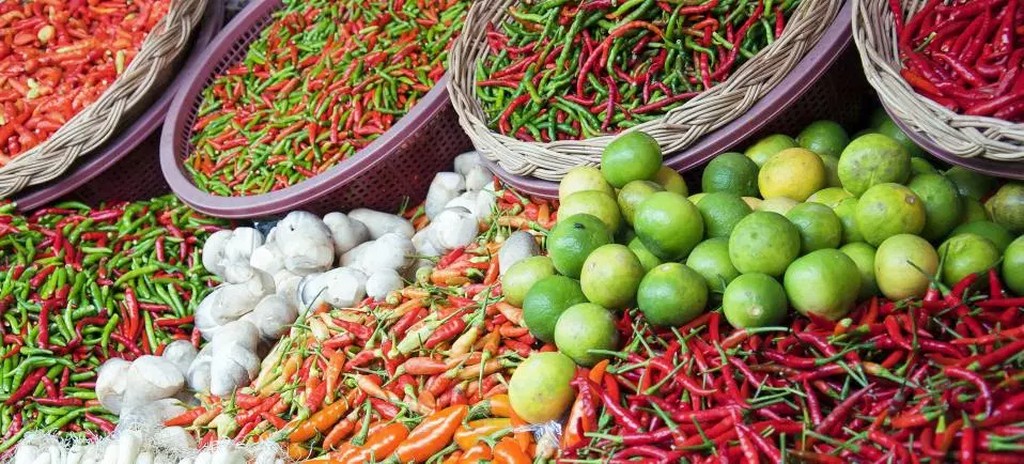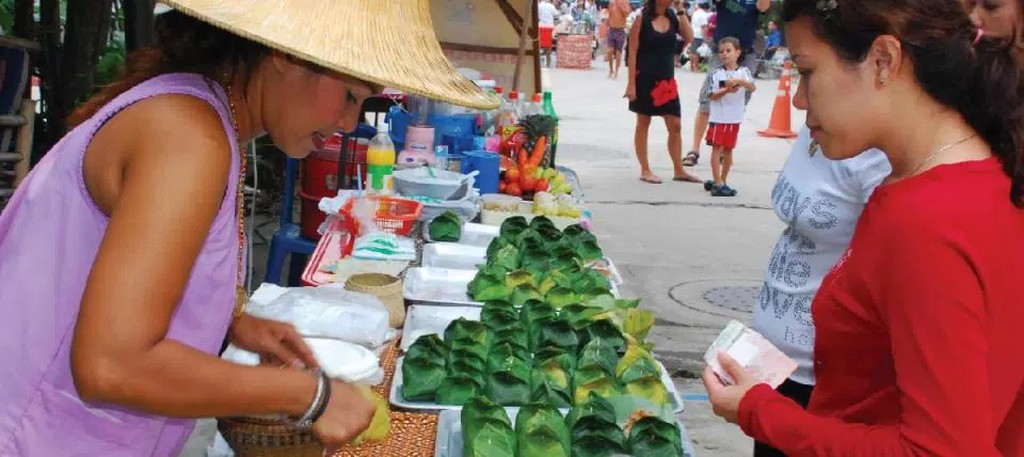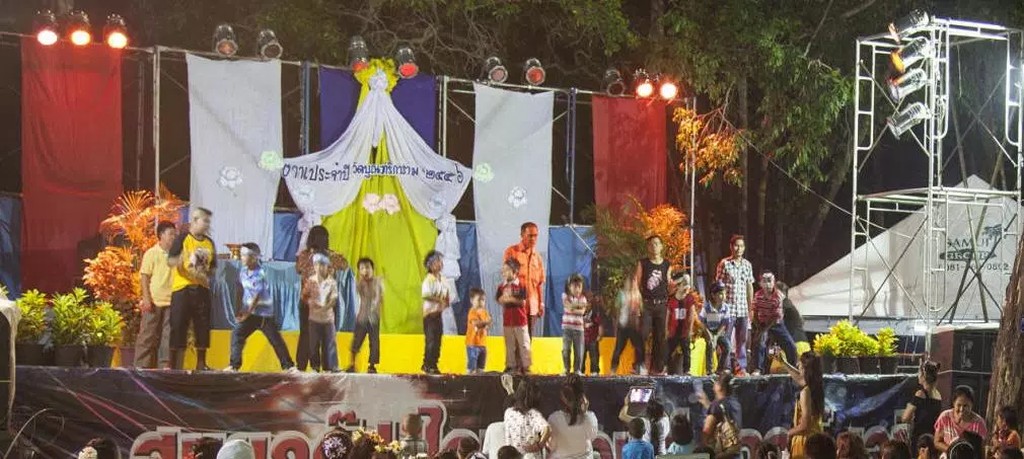Secret Buddha Garden comprises of a large sculpture garden off the airforce road towards the centre of the island. Built by a fourth generation Samui native who died a few years ago, the sculptures are based on the Buddhist scriptures and are certainly worth taking a peek at. Although not so easy to access without 4X4, it is included in many of the safari tours of the island. A big selling point here is the stunning view.
This temple is a center point of Chinese New Year celebrations in February, with lion dancing, drums, acrobatic performers, and the smell of sulphur heavy in the air from endless crackers going off. Ornate dragons adorn and protect the Chinese temple at Mae Nam, which has a distinctly different look to Thai temples with roof pitch and decor. Turn towards the sea at the traffic lights in Mae Nam, and follow the road around to the temple. This is also where Mae Nam’s walking street market is held every Thursday evening.
Driving along the Ring Road in Hua Thanon, it’s hard to miss the new Chinese shrine to Guan Yu, with its bold, modern construction and colourful statue out front. Historians are unsure of when Guan Yu was born, but he died in the year 219, after serving under the warlord Liu Bei, during the late Eastern Han Dynasty of China. He played a fundamental role in the civil war that lead to the demise of the Han Dynasty and the establishment of the state of Three Kingdoms period, of which Liu Bei was the first emperor.
Big Buddha (Wat Phra Yai) is an iconic Samui image. Located on the 4171 at the end of Bang Rak, as one rounds the bend to Plai Laem, this attraction is 12 meters high, glimmering gold, and visible from kilometres away.
Perched atop a platform, Big Buddha is much higher above sea level than its 12 metres, and the views across the bay towards Ko Som and Ko Pha-Ngan are spectacular, making the walk up the steep staircase worthwhile. The stairs are guarded on each side by brightly painted and mosaic clad nagas (Thai mythical sea serpents). Visitors drained by the heat and the trek up the stairs, are cooled by a sea breeze, as they gaze past ornate prayer bells, over the boat-filled bay. Big Buddha satisfies both the religious tourist as well as the siteseer.
What Phra Yai was constructed in the early 1970s, with the original idea being a monastery. When the monk in charge died, plans changed, and the giant Buddha was constructed. The statue sits on a small island, not much more than a rocky outcrop, called Ko Fan (Deer Island). Originally there was a wooden bridge connecting the island to the mainland, a distance of about 200m. After this bridge was damaged in the late 1970s, landfill was dumped to create a causeway to Big Buddha. There is more to Wat Phra Yai than Big Buddha, and an interesting assortment of shops, tea houses and galleries are scattered at the statue’s base.
If you stand anywhere in the region of Chaweng and spend a moment or two gazing around and upwards, you’ll see it. It the big golden spire on top of the hill that overlooks Chaweng. Plus all of the surrounding area, too. And to get to it you simply head out of Chaweng, whichever way the one-way system allows, and make your way to the ‘Lake Road’ which runs from the only ‘roundabout’ on the island, on the-road that hits the ring-road near Tesco-Lotus.
But you don’t go anywhere like that far. Somewhere close to ‘Ice Bar’ (big signs), you’ll see signs for ‘Q Bar’. Head uphill towards this. And it is a hill! It’s a first-gear ascent, bikes and cars alike. Keep going up and round to the right as you follow the road (no other choice, it’s a circle) and then you’ll finally hit the peak and find yourself outside this little temple.
Wat Plai Laem is located on the 4170, a few hundred metres past Big Buddha on the way to Choeng Mon. Although relatively new – it was built in 2004 – it is constructed in traditional style and methods so appears much older. This is a living and active temple, where worshipper come daily to pay respects to the 20-metre tall statue of Guanyin, the goddess of mercy and compassion, with her nine sets of arms, each representing a sector of Buddhism. Equally as impressive is the Laughing Buddha, which represents the Chinese-Thai beliefs.
Both statues sit on platforms reached by concrete walkways, amid a man-made lake teaming with catfish, carp and turtles. Considered an act of goodwill, Thai Buddhists feed these already fat fish, and for 10 Baht, buckets of food can be bought from automated machines that chant a prayer and thanks before filling the bucket with fish pellets. During Loi Krathong festival in November, the temple’s lake is a hive of activity as locals come to float their homemade lotus-shaped Krathongs into the lake. It is a spectacular and peaceful experience to watch hundreds of colourful banana leaf receptacles filled with incense and candles floating under the full moon.
Wat Hin Lad, located at Nathon on the way to the Hin Lad waterfall, is set in forested gardens. Massive trees with twisted exposed roots, old fruit trees, vines and a myriad of flowers all add to the temple ground’s charm. Hear the waterfall and river in the background while walking on moss-covered paths that lead through the gardens. Signs indicating ‘shoe parking’ ask you to leave your shoes outside as you enter temples to ask a monk for a blessing or prayer. Entering the temple grounds past the elephant trekking station, walk over a bridge crossing the river and come to a pearl-coloured Buddha statue.
Kunaram Temple houses Samui’s most famous mummified monk, Loung Pordaeng, and is located on the 4169 ring road between the Na Muang waterfalls and Hua Thanon. The temple is popular with locals, and is interesting to visit. Buddha is displayed in all eight positions; one for each day of the week and two for Wednesday, one each for day and night. The day of the week that you were born on determines which image one should pray to. Don’t be alarmed by the open display of the monk’s well-preserved body. Dressed in orange robes and wearing sunglasses; he is still sitting in the meditation position that he was placed in when he died more than 20 years ago.
Na Muang 1 Waterfall is situated 10 km south from Nathon at Baan Thurian. The waterfall is a popular tourist attraction on Ko Samui and can easily be reached by vehicle. The turnoff is well signposted along the 4169 ring-road, and from the parking lot, it’s only a few hundred meter’s walk.
Alongside the parking lot, one will find the camp for Namuang Safari’s elephants. Those not wanting to do an elephant trek may enjoy feeding these friendly pachyderms here, and baskets of fruit are available for 50 Baht. A short walk past curio shops and food vendors takes you to the waterfall. Take a look at the spectacular spirit tree before you make your way down stone steps, watching your step over tree roots and slippery surfaces, to the pool below, for a cool dip. The pool is popular with locals as well as tourists, and far cooler than the ocean.
When jumping from the large boulder, be sure to first orientate yourself with the hidden rocks in the water below, as accidents have happened here. The waterfall is 18 meters high, and at its most spectacular in December and January just after rainy season. Waterfall 2, which is 80 meters high is about a 30 minute walk further along from Na Muang 1. The falls are best viewed just after rainy season, as they are then at their most spectacular.
Located 635m above Lipa Noi, atop of Khao Pom Mountain, Paradise Park Farm makes a pleasant family excursion. The drive up can be a little hairy, so make use of the pickup service from the main road if you have not hired a 4×4. Walkways and trails wind through 20 acres of tropical mountain forest, at considerably cooler temperatures than the rest of Samui due to the altitude. The park’s restaurant and infinity pool share endless views over the west coast and to the Five Islands.
Interesting residents include the tiny hedgehogs, deer that harass you for food and Coco the monkey who has a pet guinea pig that he likes to brush. Spacious aviaries are home to a variety of colourful birds that keep up an endless rowdy chorus. Open from 9:00am – 6:00pm daily.
Entrance fee is 300 Baht for adults and 100 Baht for children.
Buffalo fighting is a popular form of entertainment. Before you get too horrified, this is nothing like the horrendous bull fighting of Spain. In fact, the buffalo seldom get hurt at all. Two males are put into a ring together, and they paw at the ground, bow and show their horns at each other, run and bash heads – their horns point to the back, so no goring takes place, and the winner is the one who stands his ground, the loser running away with his tail between his legs so to speak. The most that happens is that they get a bit of a headache or a bruising. The more aggressive the buffalo, the more the crowd cheers. Tickets go for between 100 – 400 Baht, depending on the stadium. Driving around Samui, a common sight is that of a handler tending to his buffalo, feeding him grass cuttings, bathing him, walking him on a rope to a patch of grass, or taking him for a swim in the sea. A strange sight to behold is walking along the beach, only to find a buffalo pop his head out from the water, lying submerged, coming up for air while his owner lies sleeping under a coconut tree, rope in hand. This is by no means a rare sight, and Bang Rak beach and Taling Ngam are common places to see this.
Muay Thai, or Thai kickboxing is Thailand’s national sport and is passionately supported by locals, who gather around TVs to cheer their favourite on. The stadiums are also well supported and tourists are welcome to watch fights at Chaweng’s two stadiums namely Petch Buncha Stadium near the Laem Din Market, and the new Chaweng Stadium, which relocated from next to Chaweng Lake to behind Solo Bar in the busy Soi Green Mango area. There is also a stadium in Lamai.
Muay Thai is known as one of the most vicious martial arts, yet it is beautiful and elegant to watch. Before each fight, contestants perform a ‘Wai Kru’, a graceful dance-type routine to honour their trainers. This can be as intricate as the fighter wants it to be and is performed to traditional Thai music played by a live band consisting of drums, cymbals and a Javanese clarinet. The music continues through the fight, with the tempo changing according to the intensity of the fight.
Just south of Lamai, the entrance to Hin Ta and Hin Yai, is well signposted. Called Grandfather and Grandmother, these rocks are naturally shaped as male and female genitalia, and are sometimes referred to as the ‘rude rocks’. This is a popular tourist location for photo opportunities, as wells as being popular with local Thais on the weekends. The road leading to the sights is lined with gift shops, artists and street food. This is one of the few places to buy garamear, Samui’s own coconut candy. Also look out for virgin coconut oil, made on the island.
For only 100 Baht, visitors gain entrance to this fascinating place, where owner William offers a tour, sharing his vast knowledge of the ocean and marine life. See his collection of sea relics, artifacts and expansive collection of shells. The museum is located on the ring-road, just before entering Nathon from the Bang Po side.
Located in Namuang in the south of the island, Magic Alambic is Samui’s only rum producer, and offers tours of the distillery. Sample the rum that is flavoured naturally with fresh fruits or coconut, in the garden bar. The rum can be purchased, as well as fruit flavoured mixers for those who find the rum a little strong on its own. Entrance is free.
Samui has a number of excellent viewpoints, though you’ll either need to be on a tour or have your own transport to reach them. Located 635m above Lipa Noi, atop of Khao Pom Mountain, Paradise Park Farm offers spectacular views across to the Five Islands and is marked on maps of the island. At the lookout point between Chaweng Noi and Lamai, a mobile kiosk sells delicious homemade coconut ice-cream to enjoy while looking out over the bay.
A little way further on the bend, a large decorative spirit house guards the road, and locals always hoot three times when passing; tourists in the know do the same. A road constructed in 2010 now joins Lamai to Mae Nam. From Lamai, it leaves the ring-road near Tamarind Springs, and from Mae Nam, turn left at the bridge opposite My Bar. Drive through the jungle, banana plantations, coconut groves and over hills that offer spectacular views. Take in the scenery from old Samui, as it is not yet developed along the road.
The half-hour elephant trek leaves from this camp, and passes through the shady forest with fruit trees and rubber plantations. The elephants are in natural 4 x 4 mode, so manage to cross the rocky stream effortlessly, while their passengers sway back and forth on their backs, secured in comfortable seats. Good padding protects the animals from the wooden seats. Namuang Safaris also offer full and half day adventure and sightseeing packages and tours around the island, showcasing Samui’s top attractions.
Signposted on the ring-road, about 1km south of Hin Ta Hin Yai (Grandfather Grandmother rocks), one finds the precariously balancing boulders known as the Overlap Stone. The road is steep, and can only be accessed by 4X4 vehicles, and even then the last section needs to be walked. The fit and the adventurous will be rewarded with stunning views and a refreshment stall is conveniently positioned at the top.
Hua Thanon is a small Muslim fishing village located just south of Lamai. It is worth a look around if you are in the area, perhaps after visiting Hin Ta Hin Yai, as the colourful fishing boats and market stalls make interesting photo opportunities. This is also one of the best places on the island to buy fresh seafood, and is home to the Guan Yu Shrine of Koh Samui.
Buddha’s Footprint is not signposted, but go up a concrete slope on the left, two kilometres west of the turnoff for the Butterfly Garden on the 4170 road. Here you will find four footprints embedded into each other by means of intricate engravings. They are housed in a simple shrine 150 steps up a steep hill. Be rewarded by a great view across the landscape to one side, and the sea to the other.
Not long ago, coconut harvesting was Samui’s main industry, and even today, it is still an active income to the island. Other farming includes rarer fruits such as durian and cashew nuts. Many of the organised safari tours on the island include stops to see coconuts being harvested by trained monkeys, sample exotic fruits from the farm or witness rubber being milked from trees.
Samui Aquarium & Tiger Zoo is located on Ban Harn beach on the southeast coast. In the aquarium you can get up close and personal with an exotic array of undersea creatures. The tiger zoo is home to magnificent Bengal tigers and snow leopards. There are daily shows featuring the tigers, and you can even have your picture taken with one. The attraction is open daily from 9am-6pm.
In Chaweng, there’s a Hindu temple that was constructed in 2003 by the Nepalese community. It is not only a place of worship and a venue for community events, it’s also a huge part of the Nepalese children’s lives. They attend local Thai schools during the day, but community members also run additional classes every morning, at the weekends and in the school holidays.
Everyone is welcome to go along and visit the temple. Worshippers tend to pray at various times between 5:00 am and 10:00 am and also in the early evening. If you do pay a visit, remove your footwear before entering the temple doors. And you might notice that worshippers will also rinse their hands at the tap beside the temple door before entering. It would be respectful if you did the same.
And when inside the temple, it is typical to keep both hands folded together as a sign of respect. The temple has a presiding priest who is often there, as are community members who help out. And if they are there all the better because an explanation about the statues, the interior design and the architecture will make your visit all the richer.
Samui native, Khun Chart has opened the ‘Samui Cultural Center and Fine Arts of Southeast Asia’ in Lipa Noi on the west side of the island. And though it’s in the early stages of development, it’s already spectacular.
His collections are fantastic, as is the house – check out the shower room just for starters. The house is huge and it needs an expert to explain everything. On one wall is a depiction of what looks like a dragon at first glance. But it isn’t, it’s Burmese in design and is often seen in Burmese temples above the large gong many of them have to summon the monks. It’s actually a mix of five sacred animals if you look closely. There’s the antlers of a deer, an elephant’s trunk, a horse’s hooves, the wings of a bird and the tail of a fish. On a nearby door, brought from China, there’s a bat carved in to the top of the frame. It’s there to bring good health and good fortune to all who pass by.
In another room there’s a huge fresco that took a year to complete, that depicts Vishnu (Hindu) asleep on Naga (Thai Buddhist) surrounded by angels. Beside that there’s another fresco with images of Garuda, a large mythical bird or bird-like creature that appears in both Hindu and Buddhist mythology. And all around the house there’re gold-leaf headdresses, arm bands and jewellery worn by Thai and Burmese traditional dancers.
Located in Baan Taling Ngam village on the west coast, it’s in one of the island’s lesser known temples and is home to the remains of a revered monk. His name is Luang Por Rerm and it’s said that his hair and nails still grow. They’re cut periodically and used as protective charms. He was born near the temple grounds in 1879 and ordained as a monk at 21 years of age. Later he travelled to Burma and is believed to have spent the next six decades or so immersing himself in deep mystical Buddhist practices. In later life, he returned to Samui and passed away in 1966 at the age of 87, some seven years before the monk at Wat Khunaram.
Founded in 1986 with funds from the Office of National Cultural Committee (ONCC), Lamai’s museum and ‘Cultural Hall’ is still a well-kept secret. Even though it’s set within the grounds of Wat Lamai, most locals are unaware of the existence of such an amazing place. And yet this rustic gem tells the story of Samui local folk from a bygone age and is absolutely fascinating.
A quaint wooden building plays host to a roomful of history with some relics dating back some 2,000 years. In pride of place, the piece de la resistance of the collection is a huge metallic war drum discovered locally in recent years. It would have been used during combat, prior to start of a battle in a bid to frighten the enemy into submission. But for a real insight into island life from the last century, a vast array of artifacts has been donated by Samui families to preserve the island’s heritage.
Less than half an hour from Chaweng, it’s easy to find and if you’ve done a tour of the island at some point, then you’ve probably passed by it. But if not, then take a few moments to stop off and wander around the grounds. About two kilometres beyond Lamai (as you’re coming from Chaweng) you’ll come to a junction signposted for the Tiger Zoo and the Aquarium. Go straight on and 800 metres after that you’ll see the sign for the temple on the left (which is also called the White Jade Buddha Temple on the sign). Follow that road for a few hundred metres, go through the ornate temple gates and park up in the area directly ahead.
Samret means ‘success’ in Thai and many people come to this temple specifically to pray for accomplishment in all facets of their lives. The White Jade Buddha name is a reference to the statue which resides within the stone chedi, in the centre of the complex which is believed to be the first structure built on the temple grounds, though when that was is uncertain.
Most likely it was around 100 years ago, give or take, according to locals. Unfortunately, like many holy places on Samui there’s no information or signage on the monuments in English, and you’ll enjoy the attraction and understand more if you have a Thai person with you who speaks some English.
You’ve surely seen them in the traffic. Men precariously steering scooters with one hand, while carrying a covered birdcage in the other hand. Inside the cage is a prized possession – a Red-whiskered Bulbul, used in the traditional bird-singing competitions of southern Thailand.
On Samui, the competitions are held every Tuesday and Saturday at 11:00 am. It’s not advertised, there’s nothing touristy about it, and if you don’t know where it is, you won’t find it. The location for the competition is down what is known locally as the ‘Ghost Road’ – the road that links Bangrak to Chaweng.
The chedi at Wat Laem Sor, on the southernmost tip of the island, must rate as one of the most spectacular attractions not just on Samui, but in the whole of the southern region. It’s not actually ‘golden’ or covered in gold leaf, as many of the smaller images of the Buddha or other artifacts sometimes are but, rather, it’s a complex patchwork of small, pure yellow tiles.
It’s unclear quite what the design pedigree was for the chedi at Wat Laem Sor, but it’s huge and very old, and was recently restored to perfection. It’s right on the water’s edge, and is stepped and layered into three or four stories topped by a futuristic pinnacle. There are two gigantic golden warrior statues on either side of the doorway, tusked and bearing immense swords, to keep away malign spirits, and possibly immodest tourists! But if you can sidestep these two intimidating behemoths then the photo opportunity here is unique: there is nothing at all between you, the chedi that’s framed by the foreground trees, with the sea and sky beyond, and the pastel-hued islands in the background.
Literally on every corner, you’ll find a stands or mobile kitchens selling their own speciality; try grilled chicken with sticky rice, noodle soup, or one of the local spicy sausages, grilled on a stick. Food on a stick is very popular, and it seems you can cook anything on a stick: various forms of meat and sausages, salty fish and odd little balls of minced seafood, chicken or pork. But as bizarre as some of these foods may appear, you can’t walk past without your nose twitching in the air and the stomach juices starting to flow.
Fresh fruit, kept cool on crushed ice is an inexpensive snack at just 10 – 15 Baht a portion, or sip on a young coconut, an excellent way to rehydrate. Those with a sweet tooth should make a stop at a pancake stand, different to the western variety in that it is make from dough, not a batter. As the pancake sizzles on the hot grid, select your filling or combination: Nutella, banana, raisins, jam, pineapple and nuts to name a few. A must try is the combination of banana and Nutella, for around 40 Baht, chopped into squares, and eaten with a toothpick.
Coffee stands are abundant, and in the heat, an iced cappuccino is a better option, with the beans ground and milk frothed while you wait, for around 30 Baht. With all the fresh fruit available, it is no wonder that fruit shakes are popular with locals and tourists. For only 20 – 30 Baht, you can overcome the heat with a fresh fruit shake and the banana shakes are a great breakfast alternative. A good place to experience an introduction to street food, with several options in one location, is at one of the ‘walking street night markets’.
Each town has its own fresh food market, with an assortment of colourful vegetables and fruit, as well as seafood, chicken and meat, it has become a popular attractions for tourists. For someone from the west, a walk past the fruit and vegetable stalls is an interesting experience and much of the produce is not available in the west. Tastes, smells and textures are all a new experience, and it’s worth buying a few curiosities to sample.
The meat stalls at the market are not as appealing to the eye as the fruit and vegetable section, with whole pig heads and chickens with heads still one. It’s quite different from buying your meat neatly packaged in polystyrene trays, and for the novice market shopper, it can be a bit disturbing. Many of the fresh markets are located next to the fishing villages, and fishermen load their catch straight from the boats to the market. Fresh fish, prawns and squid are a good buy, perfect to prepare on the grill, flavoured with limes, chilli, coriander and garlic.
You’ll find a big market a few hundred meters before the entrance to Big Buddha when coming from Bang Rak. There’s another large one shortly before the traffic lights in Bophut, coming from Chaweng, and the Laem Din Market near the lake. Nathon’s, fresh market can be found leaving the one way section, heading towards Lipa Noi, and there’s another large one in Lamai, just off the ring-road.
Samui loves walking street markets. Each neighbourhood hosts a different night of the week, usually starting at 5:00pm. A street or loop road is closed off to the traffic and locals mix with expats and tourists, enjoying the festive vibe, cheap food and drinks as well as free entertainment.
Mae Nam hosts its walking streeton a Thursday night, Fisherman’s Village on Fridays, Nathon and Chaweng do Saturdays, and Lamai hosts on a Sunday evening. Smaller markets have popped up elsewhere, but these are the main ones, with Mae Nam and Fisherman’s Village being the most popular attractions.
The main focus of walking streets is food – and food there is, in both abundance and variety. From Thai favourites including every type of food-on-a-stick to global cuisine, the choice is sure to satisfy every taste. Barmen vie for customers’ attention by pumping out music and flinging bottles into the air in order to sell as many cheap cocktails as possible. Walking street markets are a great way to sample street food and mingle with locals.
Temples regularly host fairs to raise funds, and these are a great way to experience Thai community spirit. It’s hard to know when and where these fairs will be held, but look out for large banners and blinding decorative lights pointing the way. Watch for the stream of locals parking their scooters at the entrance, listen for festive music, and tune your nose into the aroma of uncountable edible goodies mingling in the air.
The usual market food vendors are in abundance as well as stalls selling everything under the sun. Children throw darts at balloons in the hope of winning over-sized fluffy toys or fish in tanks of water for prizes. Fairs take place in the evening to avoid the heat. There’s usually a stage for local celebrities and impromptu performances.

